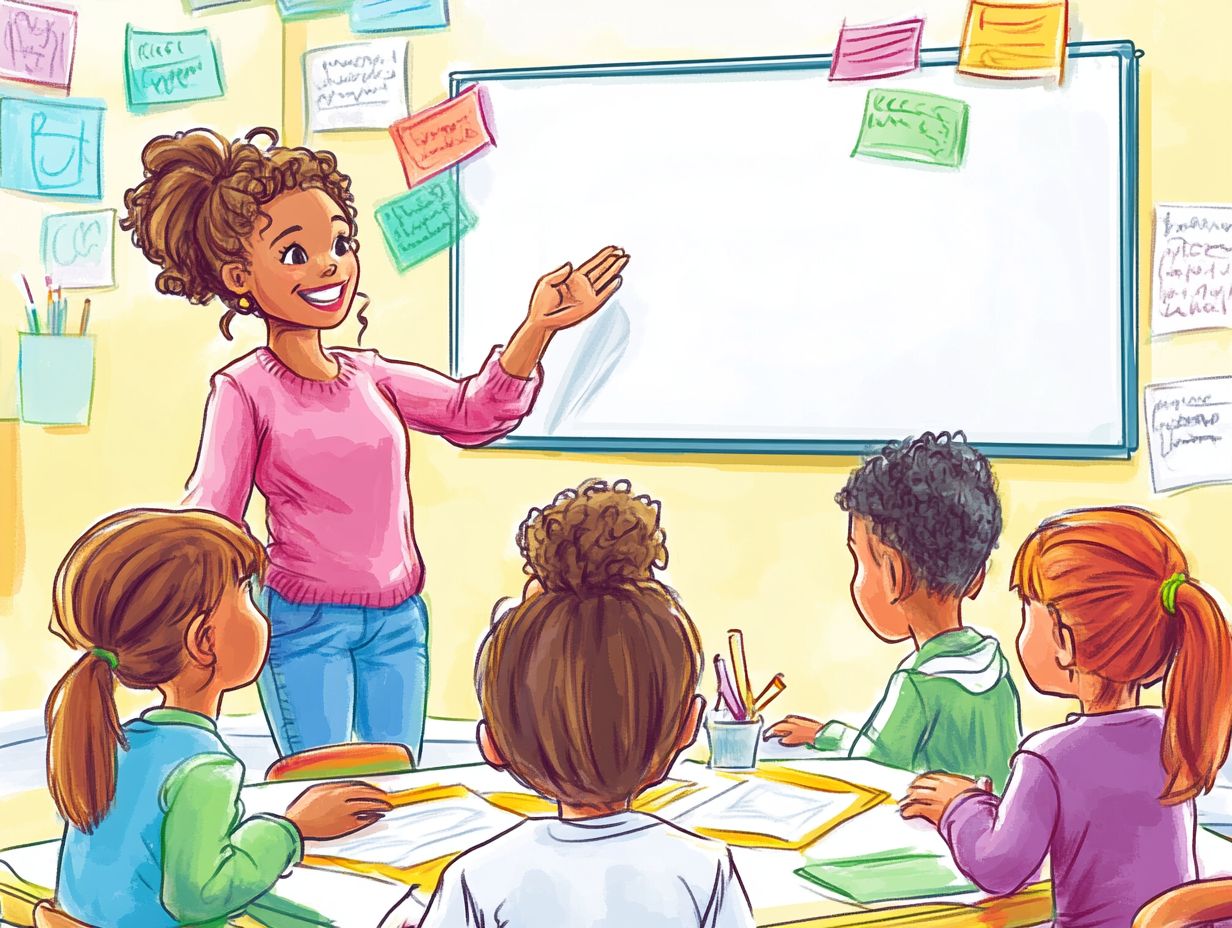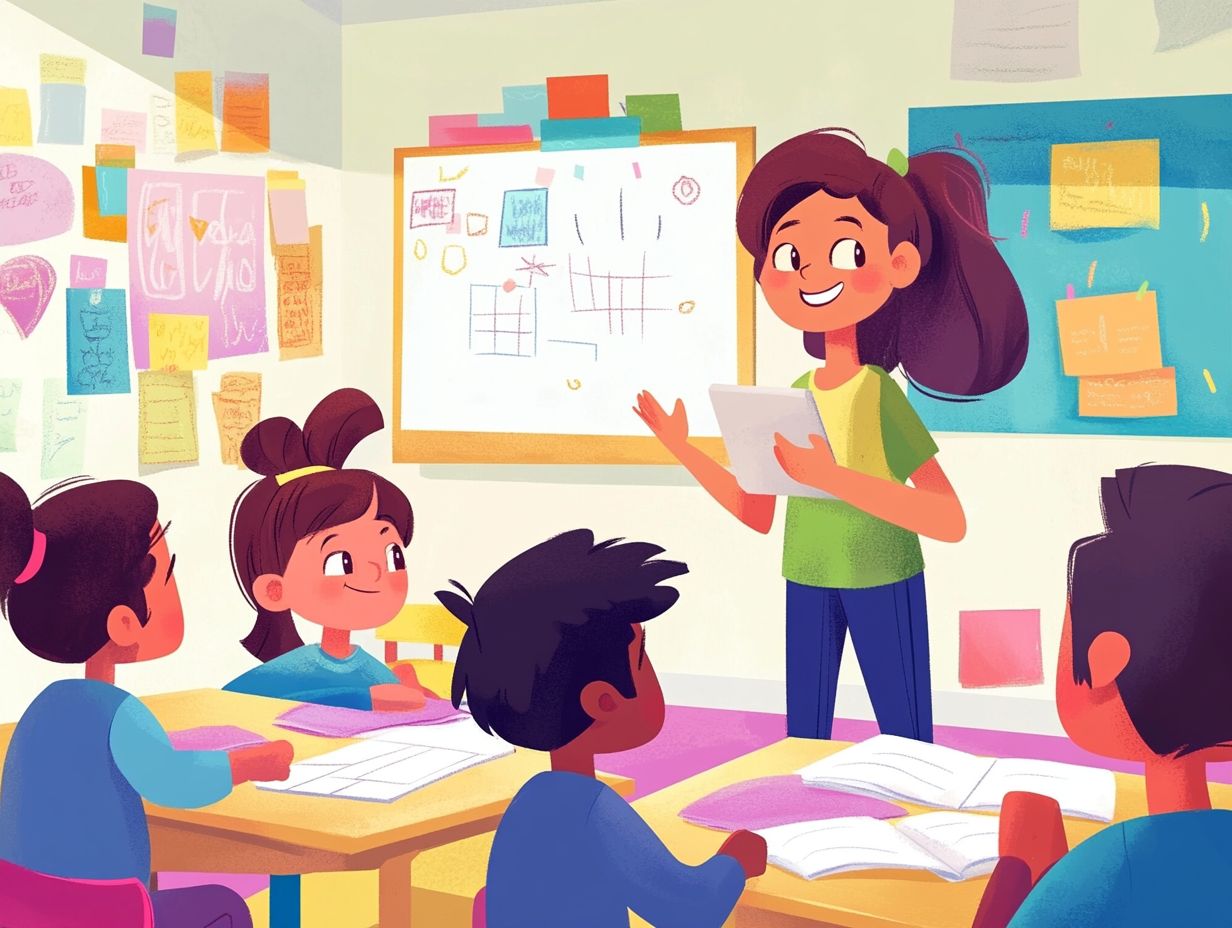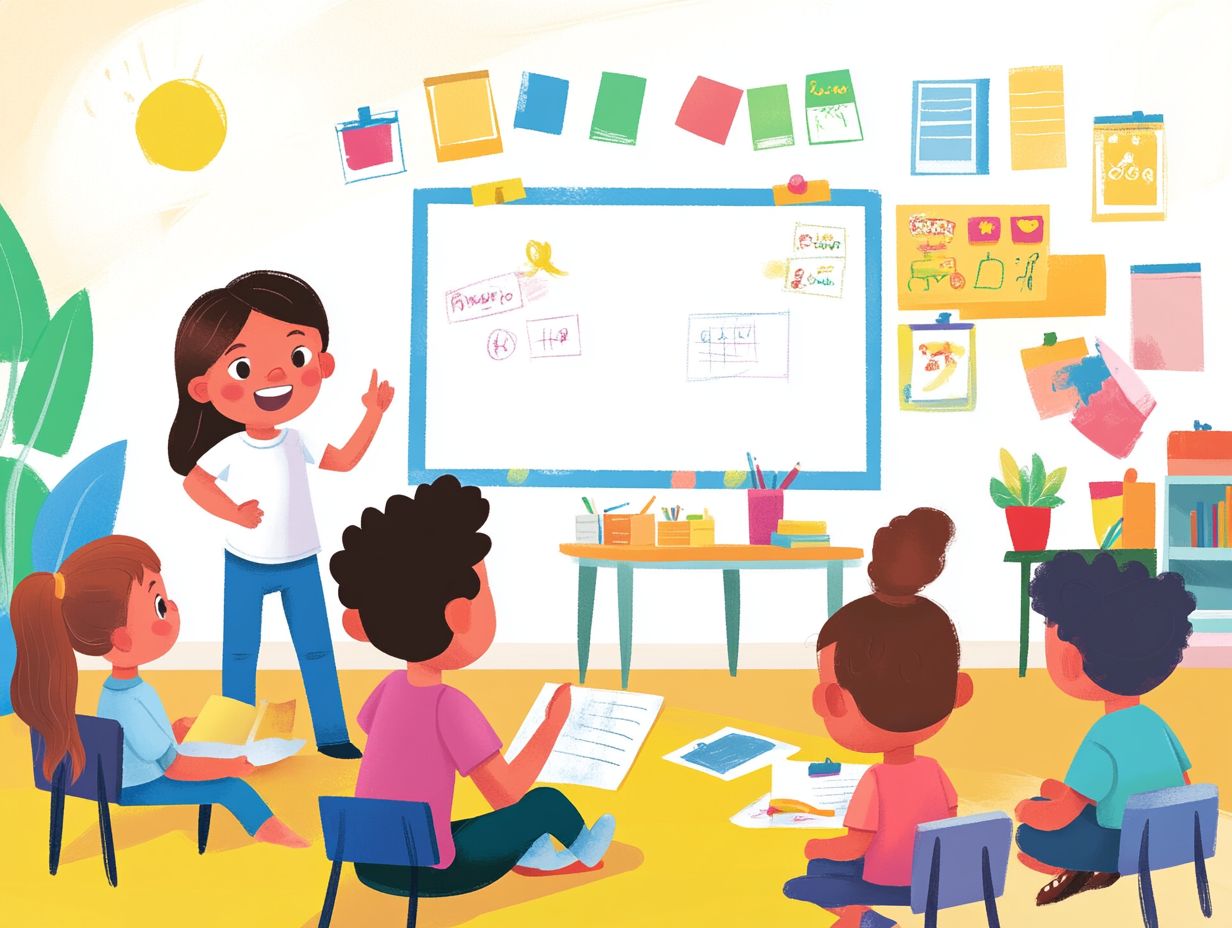How to Teach Positive Thinking in Schools
In today s educational landscape, fostering positive thinking in schools has become essential. Embracing this approach not only enhances students emotional well-being and resilience but also transforms the classroom environment for teachers, creating a more harmonious space for everyone.
By incorporating positive thinking strategies into the curriculum and nurturing healthy relationships among students, you can significantly reshape their learning experiences.
This article delves into effective methods for teaching positive thinking, creating supportive spaces, and engaging families and communities in this crucial initiative.
Contents
- Key Takeaways:
- The Importance of Teaching Positive Thinking in Schools
- Strategies for Teaching Positive Thinking
- Creating a Positive Learning Environment
- Assessing and Measuring Positive Thinking
- Collaborating with Parents and Community
- Frequently Asked Questions
- Why is teaching positive thinking important in schools?
- How can teachers incorporate positive thinking in their lessons?
- What strategies can be used to teach positive thinking in schools?
- What are the benefits of teaching positive thinking in schools?
- How can parents support the teaching of positive thinking in schools?
- Are there any resources available for teaching positive thinking in schools?
- Teaching Positive Thinking in Schools
Key Takeaways:

- Teaching positive thinking in schools has numerous benefits for both students and teachers, including improved mental health and academic performance.
- Strategies such as integrating positive thinking into the curriculum and promoting positive self-talk can effectively teach students how to think positively.
- Creating a positive learning environment by promoting positive relationships, addressing negative behavior, and involving families and communities is crucial in teaching positive thinking in schools.
The Importance of Teaching Positive Thinking in Schools
Teaching positive thinking in schools can truly change students’ lives! It is vital for nurturing emotional well-being in students. By equipping them with the skills to manage negative thoughts, you help them build resilience and introduce techniques for positive thinking in the workplace.
This, in turn, paves the way for positive outcomes both academically and socially.
As an educator, you play a crucial role in this process. By integrating strategies that encourage students to harness the power of positive thinking and emotional intelligence the ability to understand and manage our own emotions and those of others you enrich their everyday interactions and learning experiences significantly.
Benefits for Students and Teachers
The benefits of teaching positive thinking are truly multi-faceted. They impact both you and your students by fostering a supportive classroom environment that enhances emotional well-being and cultivates resilience skills.
By encouraging your students to adopt a positive mindset, you can significantly elevate their motivation levels. When you guide them to view challenges as opportunities for growth rather than daunting obstacles, they often engage more actively in their learning processes.
This proactive approach not only strengthens your relationships with students but also creates a nurturing atmosphere where everyone feels valued and inspired to contribute. When you model positive thinking, you show students how to handle setbacks, demonstrating that perseverance and optimism are essential elements of achieving success.
These dynamics can lead to improved academic performance, more effective collaboration among peers, and a noticeable boost in overall classroom morale.
Strategies for Teaching Positive Thinking
Implementing effective strategies for teaching positive thinking is essential in your classroom. These approaches empower students to take control of their thoughts and cultivate a positive mindset, a skill that benefits them across all areas of their lives.
Incorporating Positive Thinking into the Curriculum
Incorporating positive thinking into your curriculum is essential for enhancing your students’ emotional intelligence and equipping them with the tools to manage negative feelings.
By fostering a culture of optimism and resilience in your classroom, you can create an environment that encourages students to engage in self-reflection and develop gratitude practices. Implementing strategies like daily journaling, where they express gratitude or highlight positive experiences, can help shift their focus from challenges to achievements.
Integrating group discussions centered around helpful comments and celebrating small successes further reinforces this mindset. For instance, holding storytelling sessions where students share their experiences of overcoming obstacles allows them to recognize the power of a positive outlook, ultimately leading to greater emotional well-being.
Encouraging Positive Self-Talk
Encouraging positive self-talk among students is a powerful strategy for enhancing their emotional well-being and resilience. It enables them to face challenges with a more optimistic outlook. This practice cultivates a supportive environment and equips students with essential tools to combat negative thoughts and self-doubt feelings of uncertainty about one’s abilities.
You can incorporate techniques like affirmations, guiding students to create personalized, uplifting statements they can repeat daily. Maintaining gratitude journals is another effective approach, allowing them to reflect on the positives and enrich their appreciation for life s moments. Mindfulness exercises, such as focused breathing or brief meditation sessions, can further strengthen this positive mindset.
When educators model these behaviors sharing their own affirmations or keeping a gratitude journal they foster a culture of positivity. This encourages students to embrace these techniques in their daily lives.
Creating a Positive Learning Environment

A positive learning environment is vital for your success as a student! It cultivates a supportive atmosphere that encourages collaboration and positive reinforcement among both peers and educators.
This nurturing setting enhances engagement and gives you the power to thrive academically and socially.
Promoting Positive Relationships and Interactions
Promoting positive relationships in your classroom is essential for cultivating a supportive environment where students feel emotionally secure and valued.
To foster these connections, consider implementing collaborative activities and group projects that encourage teamwork and open communication among peers. These initiatives enable students to learn from one another and appreciate diverse perspectives, enriching their social experience.
Integrating social-emotional learning programs can significantly enhance emotional support. These programs equip students with vital skills like empathy, conflict resolution, and self-awareness. Participating in structured interactions helps learners feel more connected and invested in their educational journey, resulting in increased engagement and a more harmonious classroom atmosphere.
Addressing Negative Behavior and Thoughts
To maintain a positive classroom, tackle negative behaviors and thoughts head-on. Use practical solutions to help students manage their emotions effectively.
Implement various methods that not only identify these negative behaviors but also offer practical solutions. By utilizing coping strategies, you equip students with essential tools to manage their emotions, fostering a sense of self-awareness. Incorporating techniques that help change negative thoughts encourages them to shift their mindset and develop healthier thought patterns.
It’s also essential for you to foster resilience skills among your students, giving them the power to bounce back from setbacks and enabling a more productive learning experience. By weaving these techniques into your classroom, you play a pivotal role in nurturing well-rounded individuals.
Assessing and Measuring Positive Thinking
Measuring positive thinking is key to understanding your students’ emotional health. This helps you improve your teaching methods and create a supportive learning space.
By assessing and measuring positive thinking, you gain valuable insights that can enhance your educational approach and foster a more supportive learning environment.
Tools and Techniques for Evaluation
You can employ a variety of tools and techniques to assess positive thinking among students. This approach provides valuable insights into their emotional well-being.
One effective approach is implementing gratitude journals. Students regularly express what they appreciate in their lives, cultivating a mindset rooted in positivity. Another effective approach is using questions that help students think about their feelings and experiences, which leads to deeper self-awareness.
Incorporating peer feedback mechanisms allows students to share constructive observations and encouragement, fostering a supportive community. By continuously assessing through these methods, you enhance your understanding of each student’s emotional state while nurturing a classroom atmosphere characterized by openness, trust, and collaboration essential ingredients for healthy academic and personal growth.
Collaborating with Parents and Community
Collaborating with parents and community organizations is essential for extending the teaching of positive thinking beyond the classroom. This partnership ensures that emotional support and encouragement are consistently provided at home and within the broader community. Together, we create a holistic environment for growth.
Involving Families and Community Organizations

Involving families and community organizations in teaching positive thinking can greatly enhance your students’ emotional intelligence. This creates a supportive network that reinforces positive behaviors.
This collaborative approach can take various forms. Imagine local nonprofits hosting workshops that equip parents with effective communication techniques and mentoring programs that connect students with inspiring role models from the community. Schools can also team up with health organizations to provide essential counseling services and mindfulness sessions that promote emotional well-being.
Join the fun by creating events like community service days or family nights. These activities foster a sense of belonging and unity, allowing families to engage with educators and one another in a positive atmosphere. Such partnerships enrich the school environment and ensure that students cultivate a well-rounded approach to positivity that goes beyond the classroom.
Watch this inspiring video on positive thinking in action!
Frequently Asked Questions
Why is teaching positive thinking important in schools?
Teaching positive thinking in schools is crucial as it helps students develop a positive mindset, leading to better mental health, resilience, and overall academic success.
How can teachers incorporate positive thinking in their lessons?
Teachers can incorporate positive thinking in their lessons by using positive language, encouraging students to reframe negative thoughts, and creating a positive and supportive classroom environment.
What strategies can be used to teach positive thinking in schools?
- Mindfulness exercises
- Gratitude journaling
- Positive affirmations
- Positive self-talk
What are the benefits of teaching positive thinking in schools?
- Improved self-esteem
- Reduced stress and anxiety
- Better problem-solving skills
- Increased motivation and resilience
How can parents support the teaching of positive thinking in schools?
Parents can support the teaching of positive thinking in schools by reinforcing positive behaviors and language at home, modeling positive thinking themselves, and working with teachers to create a positive support system for their child.
Are there any resources available for teaching positive thinking in schools?
Discover resources that can help you teach positive thinking today!
Teaching Positive Thinking in Schools
Many resources are available to teach positive thinking in schools. These include books, lesson plans, online courses, and workshops.
Effective strategies for teaching positive thinking include mindfulness exercises and gratitude journaling. These practices can greatly enhance students’ mental well-being.
Parents can reinforce positive behaviors at home. By modeling positive thinking, they create a supportive environment for their children.







